How to play gospel blues guitar and make something original – and thrilling – out of electric guitar's oldest art form
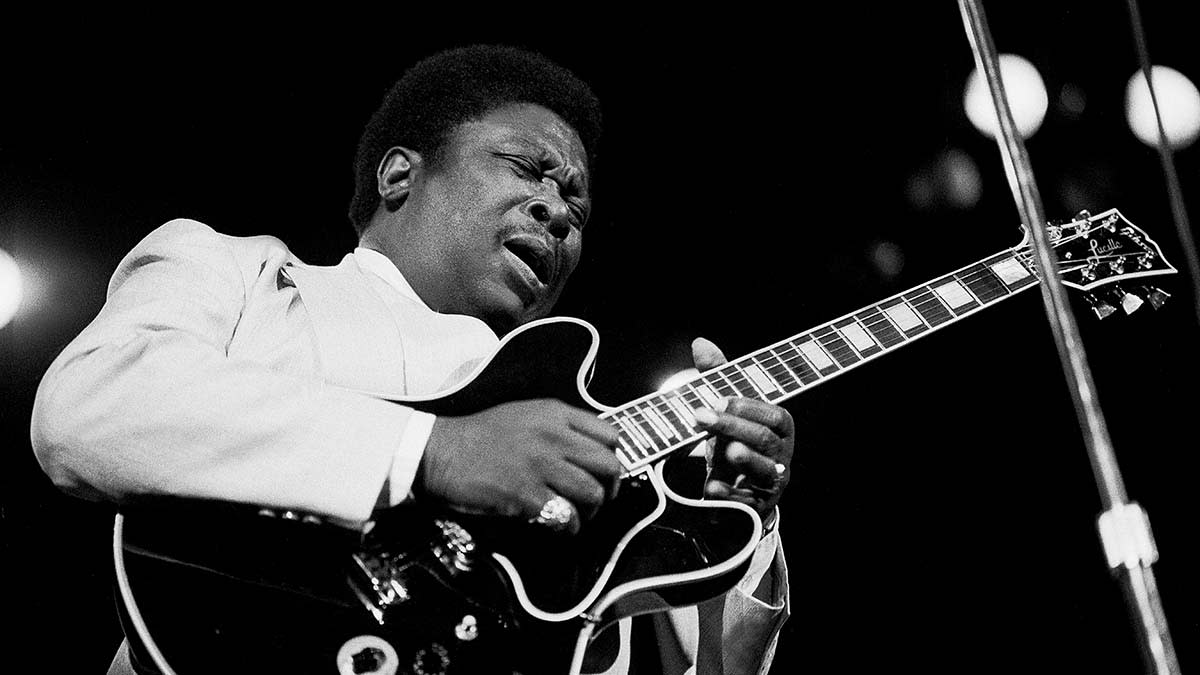
- Oops!Something went wrong.Please try again later.
Another title I would like to have used here would be something like ‘Slow Major Gospel Blues With Off-Grid Timing And Lots Of Other Blues Trademarks’… But that, quite understandably, wouldn’t have made it past the editors.
Nevertheless, you will find all these things in the example solo. There are a few tips of the hat to John Mayer, Stevie Ray Vaughan and B.B. King among others, but I’m not attempting to emulate anyone in particular.
Let’s talk about some of the blues ‘trademarks’ mentioned earlier. Many of these phrases occupy a space between major and minor. This is achieved by sliding or trilling between the minor and major 3rd (Eb to E in this key), or pushing/pulling that minor 3rd.
It’s transcribed as a quarter-tone bend for clarity, but this shouldn’t be taken too literally; ‘slightly sharp’ would be more accurate but would take up too much space! Note that this approach also ‘bends’ the minor pentatonic to fit over major chords. Combining this with the 6th (A in this key of C) really gives phrases a B.B. King vibe.
Next, let’s look at phrasing and timing. If you follow the transcription while listening to the audio, you’ll notice there is a real sense of pulling back against the tempo – or, put another way, playing behind the beat. I call this ‘off-grid’ timing as it doesn’t conform to a regimented four, eight or 12 (and so on) to the bar metric.
As with quarter-note bends, there is only so much information a transcription can give without becoming incredibly complex – and defeating the object of sounding laid-back! For this reason, I’ve ‘quantized’ the notated rhythms to the nearest beat and specified ‘late’ underneath. Hope you enjoy and see you next time.
Example 1
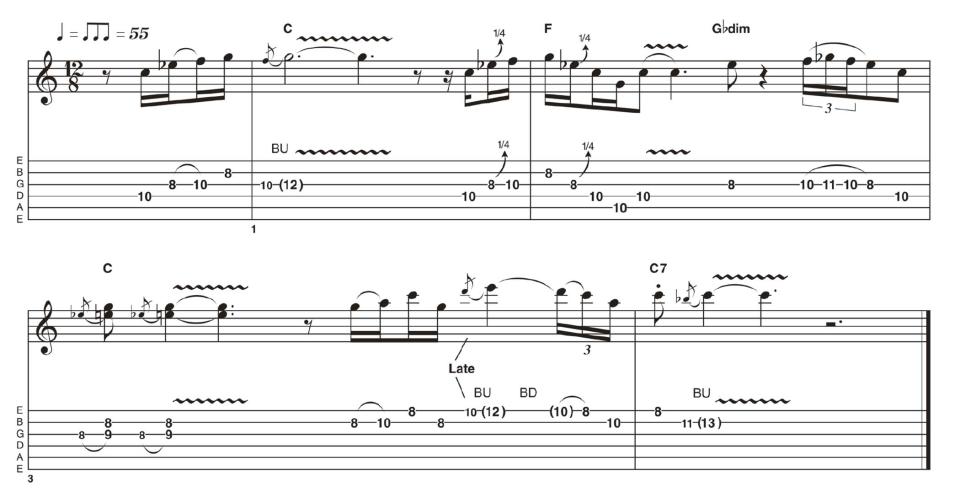
This opening phrase is derived from shape 1 of the C minor pentatonic, but it moves outside that ‘box’ on occasion, too. Almost every instance of Eb is pushed or pulled slightly sharp, but there are moments when the Eb fits ‘as is’ (for example, in the pickup bar and over the Gb diminished chord), so I’ve left these alone.
Note the hammer-on from Eb to E in the penultimate bar, stepping outside the C minor pentatonic to include the major 3rd. Check the delayed timing from here on out!
Example 2.
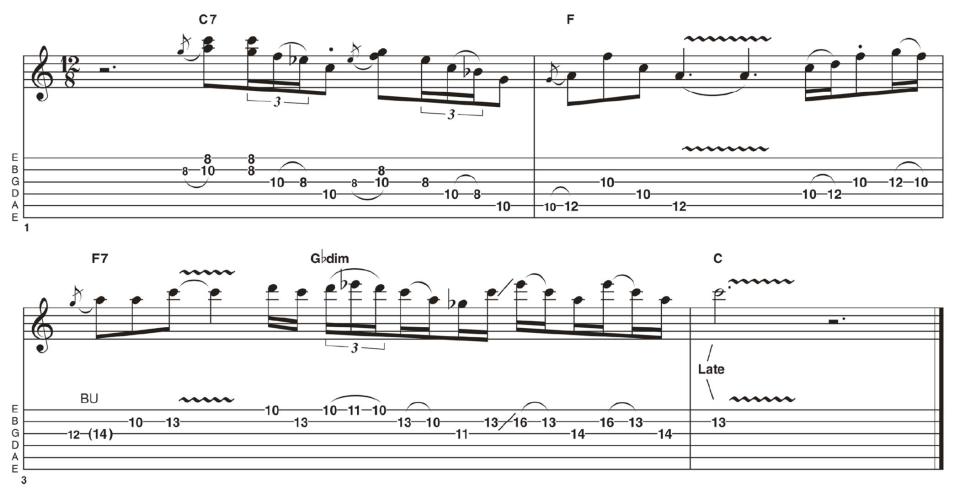
Taking the same flexible approach to timing, we start with an SRV/John Mayer-type doublestop lick, before landing at a Wind Cries Mary-style F major chord. From here, we opt for a fragment of the shape 5 F major pentatonic (aka D minor pentatonic!) heading for the Gb diminished chord.
Here, I’ve gone with two partial diminished arpeggios (in reality, just adjacent minor 3rds), sliding the same pattern up three frets – or another minor 3rd. This final lick could also be viewed as part of a shape 3 C minor pentatonic with an added 6th (A).
Example 3.
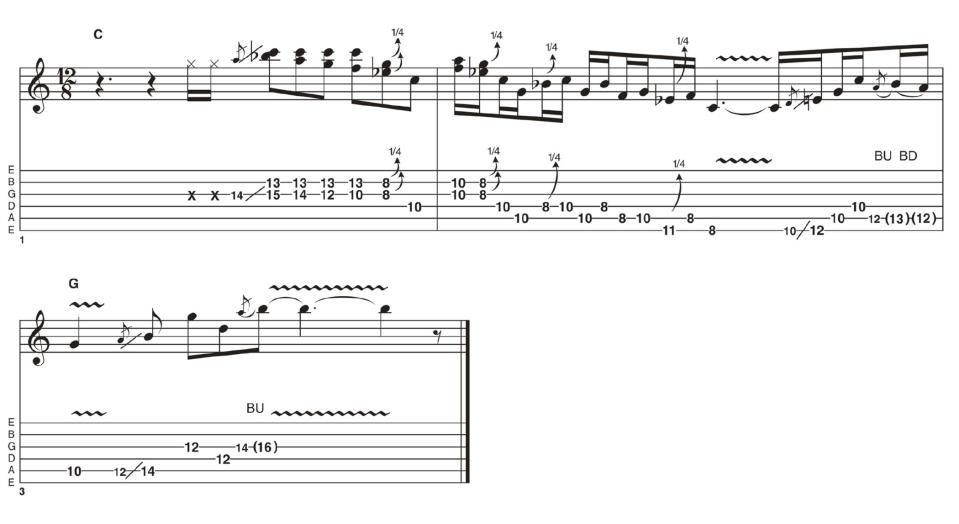
Using sliding doublestops in the pickup bar, this phrase then switches to a shape 1 minor pentatonic approach going into bar 1, with a few pushed/pulled instances of Eb.
Sliding briefly to a C major triad, we switch to a similar G major triad at the 12th fret – an unashamedly ‘major’ moment in a solo that has hardly committed either way up to this point! The timing here is relatively ‘on-grid’, but that doesn’t mean it has to be.
Example 4
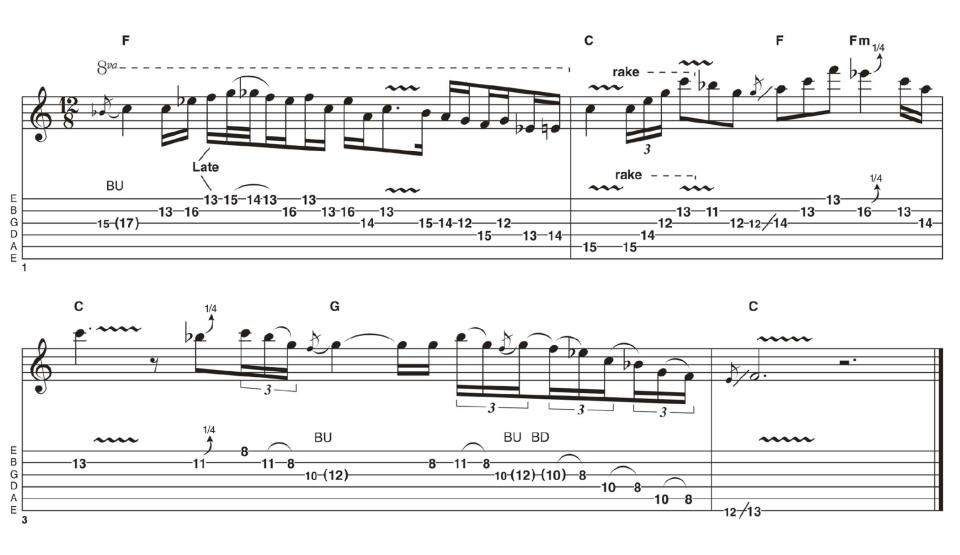
There’s a fair bit going on in this final phrase. First, I regard bar 1 as taken from the shape 3 C minor pentatonic with an added b5 (Gb), a 6th (A) and a major 3rd (E natural).
Bar 2 features a C major arpeggio, which is raked through before referencing the b7 (Bb) then sliding up to acknowledge the change to F using a triad/partial chord at the 12th fret.
The A/major 6th over the F minor is a bit of a stretch, but it works here (in my opinion!). We finish with a shape 1 C minor pentatonic resolving to E natural.
Hear it here
B.B. King – Blues on the Bayou
B.B. is arguably the inventor of the style we’re looking at here, so check out his phrasing and note choice on Blues Boys Tune, I’ll Survive, Blues Man, Darlin’ What Happened and I Got Some Outside Help I Don’t Need – or, indeed, almost any track from this late-90s release, which captures him on excellent form.
Notice that B.B. doesn’t always feel the need to unleash long strings of notes and regards the rhythm as equally important to the notes themselves.
John Mayer – Continuum
There is plenty of major/dominant 7th/gospel/soul phrasing to take inspiration from in this 2006 album. Check out Gravity where he leans heavily on intervals (and the 6th) to create a non-pentatonic-sounding melodic line with ‘off-grid’ timing.
Slow Dancing In A Burning Room takes a slightly more pentatonic approach, with a few doublestops and other nice touches occurring throughout. Finally, give I’m Gonna Find Another You a spin to hear a more traditional approach.
Stevie Ray Vaughan & Double Trouble – Texas Flood
Most readers will almost certainly know about this one already, but it remains a classic with some exemplary playing and phrasing on the title track, plus Testify, Rude Mood, Mary Had A Little Lamb…
More uptempo and aggressive than the example solo perhaps, but the phrasing and melodic ideas will make a great fit. Honourable mention should also go to Lenny, a track I’ve cited here a number of times previously for good reason!

